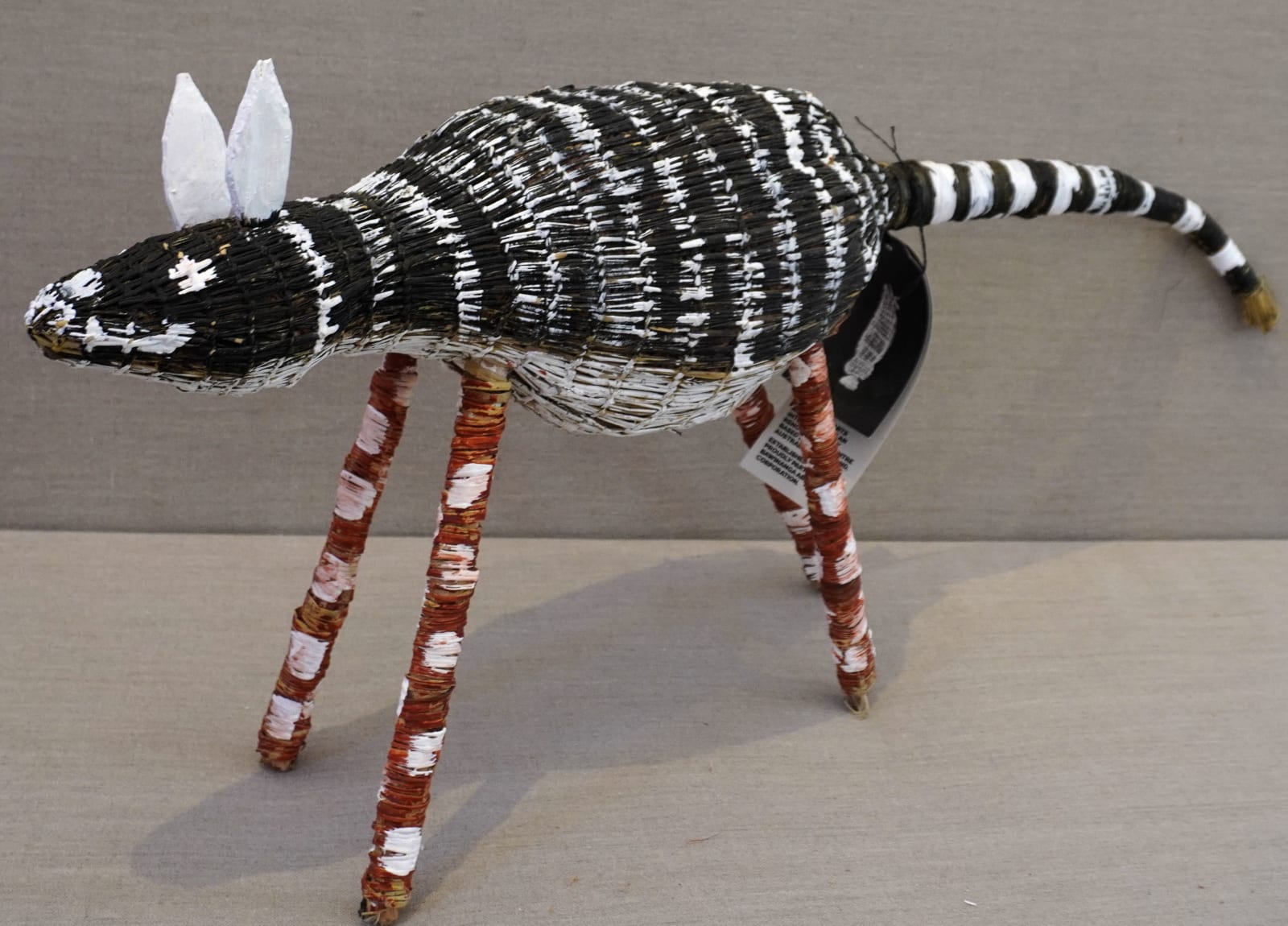Vera Cameron Australian, Rembarrnga, b. 1969
Djamo (dog), 2025
pandanus with pigment and fixative
75 x 34 x 16 cm
273-25
Marebu is the general Kunwinjku term for woven mats. These were traditionally valuable items. Some were used as working surfaces, others were worn and others used during ceremonial occasions. Traditionally...
Marebu is the general Kunwinjku term for woven mats. These were traditionally valuable items. Some were used as working surfaces, others were worn and others used during ceremonial occasions. Traditionally these items would have been woven from plain pandanus, but today they are usually coloured with natural dyes. It is possible that the use of natural dyes was encouraged by missionaries, influenced by what they had seen on Pacific islands. However it would have been local women, with their knowledge of local plants and bush medicines, who would have carried out the experimentation necessary for such a rich dye repertoire.
The most common dyes include: Yellow-orange: Mandjurndum (the bright orange roots of the Pognolobus reticulatus bush)
Brown: Wirdilwirdil (the red bulb of Haemadorum breviculae grass) Green: The growing shoot of the pandanus itself (Pandanus spiralis) boiled with the ashes of pandanus leaves
The most common dyes include: Yellow-orange: Mandjurndum (the bright orange roots of the Pognolobus reticulatus bush)
Brown: Wirdilwirdil (the red bulb of Haemadorum breviculae grass) Green: The growing shoot of the pandanus itself (Pandanus spiralis) boiled with the ashes of pandanus leaves
1
of
46
